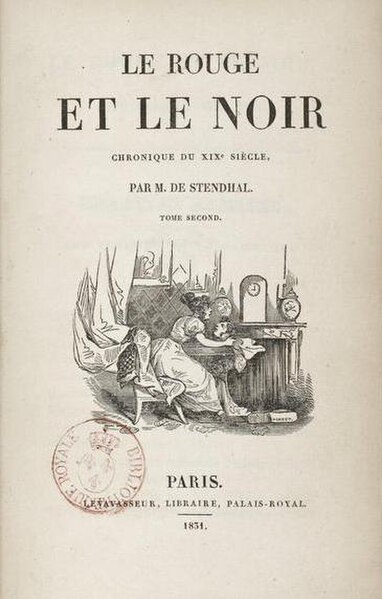The Charterhouse of Parma
The Charterhouse of Parma is a novel by French writer Stendhal, published in 1839. Telling the story of an Italian nobleman in the Napoleonic era and later, it was admired by Balzac, Tolstoy, André Gide, Lampedusa, Henry James, and Ernest Hemingway. It was inspired by an inauthentic Italian account of the dissolute youth of Alessandro Farnese. The novel has been adapted for opera, film and television.
Cover of the 1846 edition, preceded by a literary study on Stendhal by Balzac
Marie-Henri Beyle, better known by his pen name Stendhal, was a 19th-century French writer. Best known for the novels Le Rouge et le Noir and La Chartreuse de Parme, he is highly regarded for the acute analysis of his characters' psychology and considered one of the early and foremost practitioners of realism. A self-proclaimed egotist, he coined the same characteristic in his characters' "Beylism".
Stendhal, by Olof Johan Södermark, 1840
A plaque on a house in Vilnius where Stendhal stayed in December 1812 during Napoleon's retreat from Russia.
List of the women that he had loved, inserted in Life of Henry Brulard, in 1835: "I dreamed deeply of these names, and of the astonishing stupidities and stupidities they did to me." (From left to right: Virginie Kubly, Angela Pietragrua, Adèle Rebuffel, Mina de Griesheim, Mélanie Guilbert, Angelina Bereyter, Alexandrine Daru, Angela Pietragrua, Matilde Dembowski, Clémentine Curial, Giulia Rinieri, Madame Azur-Alberthe de Rubempré)
The second volume of the 1831 edition of The Red and the Black, considered to be Stendhal's most notable and well-known work.





